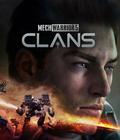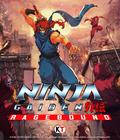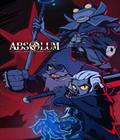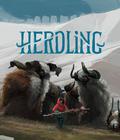
Genre: Turn-Based Strategy
Publisher: Atlus
Developer: Banpresto
Release Date: November 14, 2006
 I'm going to be honest with you. I'm a big fan of "mecha." Everything from Mechwarrior to Gundam tends to get my blood going in some fashion or another, so it should come as no big shock that Super Robot Taisen was one of my favorite series. For those unfamiliar with the concept behind SRT, it takes famous anime series like Macross, Gundam, Evangelion and GaoGaiGar and throws them together in a strategy RPG. Unfortunately, until recently, Super Robot Taisen was limited to Japan. While only a few companies own the rights to many mecha shows there, it's divided up between countless corporations in America, and an attempt to port a game would be nearly impossible. Luckily for us, however, over the Super Robot Taisen franchise's long run, it has gathered a staggering amount of "original" characters exclusive to the games. The Original Generation titles star these characters, not the protagonists of Gundam and Macross, and that means it could be translated without exorbitant licensing fees. The first iteration in the series, Super Robot Taisen: Original Generation was released earlier this year, and only a few short months later, we have Super Robot Taisen: Original Generation 2.
I'm going to be honest with you. I'm a big fan of "mecha." Everything from Mechwarrior to Gundam tends to get my blood going in some fashion or another, so it should come as no big shock that Super Robot Taisen was one of my favorite series. For those unfamiliar with the concept behind SRT, it takes famous anime series like Macross, Gundam, Evangelion and GaoGaiGar and throws them together in a strategy RPG. Unfortunately, until recently, Super Robot Taisen was limited to Japan. While only a few companies own the rights to many mecha shows there, it's divided up between countless corporations in America, and an attempt to port a game would be nearly impossible. Luckily for us, however, over the Super Robot Taisen franchise's long run, it has gathered a staggering amount of "original" characters exclusive to the games. The Original Generation titles star these characters, not the protagonists of Gundam and Macross, and that means it could be translated without exorbitant licensing fees. The first iteration in the series, Super Robot Taisen: Original Generation was released earlier this year, and only a few short months later, we have Super Robot Taisen: Original Generation 2.
OG2 is set a few months after the events of the preceding title. The ATX and SRX teams have gone their separate ways, working to defeat the few remnants of the Divine Crusaders, a rebel faction who was routed in the first game. Of course, nothing is quite that simple, and before long, the original heroes and some new allies are drawn into a complex web involving no less than three alien races, a Neo-Divine Crusader faction and invaders from other dimensions. The complexity of this plot is one of the game's major flaws: Rather than basing the single as if it was a single interwoven plot, like the first offering did, Super Robot Taisen: Original Generation 2 throws the various plot threads together in a strange mish-mash. Instead of feeling like a sensible progression, the story ends up feeling more like a patchwork quilt, and the storyline often descends into confusing and pointless interludes. To fans of the series, these interludes are references and cameos by popular characters from the series, but to uninitiated American fans, they can come off as bewildering.
Like the original game, Super Robot Taisen: Original Generation is a turn based strategy-RPG built around giant robots. Set on a grid-based battlefield, players launch their mecha from a home carrier and set about completing the various stages' objectives. Most of the time, players are going to have to defeat specific foes, but the game occasionally mixes things up by requiring players to reach specific locations or weaken, but not kill an enemy. Nevertheless, most of the missions are fairly easy, and the game's big challenge comes from the Battle Mastery. Each stage has a single optional Battle Mastery objective which is displayed on the menu screen. Completing that objective rewards you with a BM point, and earning enough points sends you into Hard mode. While this is mostly to increase the challenge of the game and keep it balanced to each specific player, there is a hidden final stage which can only be accessed with an extremely high number of Mastery points, encouraging players to plan out their moves in advance.
Combat hasn't changed much from the original Original Generation title. Players move across the battlefield and attack via a menu with their weapons. On the enemy's turn, targeted allies can choose to try to dodge the attack, defend to lessen damage or attempt a counter-attack against the foe. It is a fairly simple system, made more complex by the details of the pilot and mecha. A few changes have been made to the system, but they are not all arguably for the better.
First is the addition of Combo attacks. If a pilot has the Combo skill, and his mecha has a combo-capable attack, they can attack multiple enemies who are standing next to one another with a single attack. This is nice in concept, but the attacks are almost too powerful, and players can tear through the enemy ranks incredibly quickly. Likewise, MAP attacks return from the first game, although they are significantly more common and powerful in Original Generation 2. For those who skipped the first game, MAP weapons are special attacks that hit an entire area, rather than a single foe, and can defeat many enemies in a single shot. In the first Original Generation, these attacks were uncommon, while in the sequel, almost every other mecha seems to have one (or more!).
Perhaps the biggest change and flaw is the heavy increase on combination attacks; only two existed in the original, but there are six different (and significantly more powerful) combination attacks in OG2. These attacks tend to dwarf the power of all other attacks and ignore any defensive barriers that an enemy may have. While using these attacks isn't required, they are so powerful and effective that it feels foolish not to. Putting such a reliance on specific mecha and pilots really hurts the customization found in the first game, and it's a real disappointment for those seeking a challenge.
There are two parts to every unit you launch: the pilot and the mecha itself. One cannot function without the other, and using good combinations of the two makes your life much easier. Pilots are the folks who control the robot, and no two are alike; each pilot has different stats, some focusing on melee, others on defense, yet others on mobility.
However, the biggest difference between pilots comes in their abilities and spells. Abilities are passive powers that influence combat in various ways. Some pilots have Telekinesis, which allows them to use special weapons and have improved dodge, while others have the Attacker ability, which makes them do more damage at high Will. Beyond the abilities that a pilot has naturally, he or she can also purchase new ones using Pilot Points, earned for shooting down foes. In the long run, however, these abilities are expensive, and each pilot only has a few "slots" to fill, and some abilities are significantly better than others, so the wide selection doesn't matter much unless one is playing a New Game +.
The other thing that pilots bring to the unit is Spells, which are powerful buffs that are cast using "SP"; mastering them is required for advancing through the game. Spells vary in ability from healing an ally's hit points to doubling the damage of your next attack. Each pilot begins with only two or three and learns up to six as they level up. Since each pilot has different spells, sometimes even characters that are weak in combat can make up for it with their exceptional spells. However, unless a character has the incredible expensive SP Regenerate ability, they only have a limited amount of SP for a chapter, and players who waste their spells early on may find themselves being destroyed by a strong boss.
Of course, the pilots would be nothing without their robots. While each character comes with a specific mecha that is their "iconic" machine, most pilots can be switched around at will to each robot, although certain robots gain special attacks only with their default pilots. While mecha don't get any stronger through combat, they can be upgraded between missions, at a hefty cost. Weapons can be made more powerful, and armor and mobility can be boosted to improve the overall performance of a machine. Of course, money is limited unless you're willing to sacrifice skill points, so smart players will end up focusing on a specific few mecha that have high utility.
There are actually two kinds of weapons in OG2. All mecha have at least one built-in weapon, but on mass-produced military machines, these weapons tend to be nearly useless. Thankfully, modular weapons are available here as they were in the original, and they're capable of being passed around to any machine capable of equipping them. Each mecha has a "WP cost" that shows how many of these weapons they can equip, although most only need one or two. The big flaw in this system is one not all gamers may encounter, but it is very notable: There are a few extremely powerful weapons and then a large number of useless weaker weapons. Unlike the first Original Generation, many mecha have incredibly powerful built-in weapons. Once players get through the early parts of the game, the only weapons worth equipping are the Armor Breaker status missile and the rare hidden super weapons. Most of the weapons will sit in the player's inventory and never see use.
Apart from upgrades, mecha can also improve their abilities via Parts, which are special items dropped by enemies; each mecha can equip a specific number of them, ranging from one to four. The Parts range from improved armor to adding new special defenses to the mecha. Unlike modular weapons, these Parts all tend to be very useful, with the exception of the expendable healing items. With money at a premium in Original Generation 2, players can use these valuable items to shore up the weak points of their machines without spending hard-earned cash. Another nice bonus is the ability to sell items for extra cash; this is a huge waste for most, but it means that players can turn expendable items into a bit of spending money.
What all this boils down to is this: Original Generation 2 is a significantly easier title than its predecessor. With a massive amount of radically more powerful mecha, easy-to-find and abundant hidden weapons, and the increase in combination and MAP attacks, the player's team will tear through most enemies like paper. Even powerful boss enemies fall in a single round without much effort, and as a player, I often didn't even bother to use the debuff modular weaponry, since it didn't feel necessary. While Original Generation 2 is a bit less forgiving of mistakes than the original, the new and more powerful weaponry simply makes things far too easy, even on Hard mode.
The good news is that Super Robot Taisen: Original Generation 2 is a significantly better-looking game than its predecessor. While the overall quality of the sprites has been lowered (Weissritter in particular looks significantly worse than its Original Generation counterpart), all the attack animations have been much improved. They are far more dramatic and detailed, and mecha actually move now, rather than simply sliding across the screen, as they did in the first game. Different modular weapons look unique and have much more impressive effects than before. The bad news: While the interface is more detailed in OG2, it's also far uglier. Annoying green gridlines cross all the menus, and everything looks more cramped and busy. It's a mixed blessing, but it could be better.
On the other hand, Original Generation 2's audio aspect is solid. While limited by the power of the Game Boy Advance, Original Generation 2 manages to pull off dramatic impressive songs. Many characters have their own unique themes that complement the character or mecha; in OG2, you're allowed to modify each character's theme song, so if a specific song does bother you, just switch it. It won't measure up to any modern title, but Original Generation 2 is a good-sounding GBA game.
My own personal bias for the series aside, I would still recommend Super Robot Taisen: Original Generation 2 to any mecha or RPG fans looking for a new game to play. Fairly long at over 40 scenarios, the title also offers a choice of path splits, and three different difficulty modes. Even after you're done, it can be a fun experience to try a new team or to get a missing skill point. The plotline may be a bit confusing, but the gameplay makes it a worthy addition to any library.
Score: 8.0/10




























